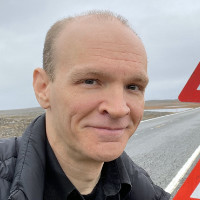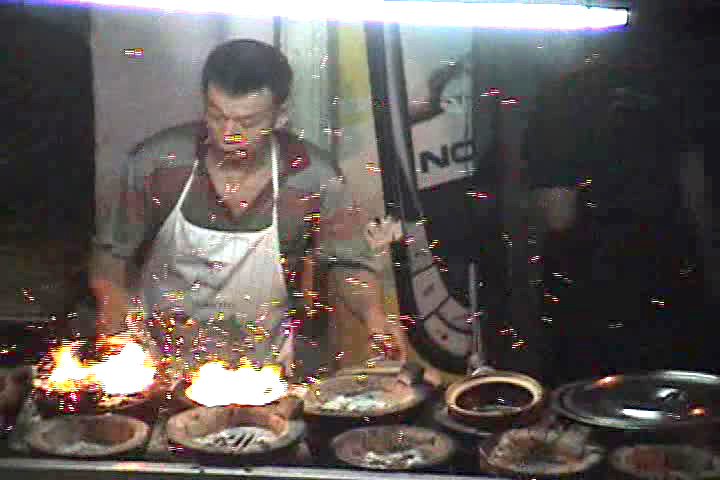
I’m an American guy walking through Chinatown in the capital of Malaysia with my new Japanese friends past Indian street stalls and Arab mosques to eat at my favorite authentic Burmese restaurant.
That’s what my life has become after only a couple days in Kuala Lumpur, Malaysia.
On my first night I arrived in KL (everyone calls it KL) with no room reserved so I headed to the area near the big blue Central Market building in Chinatown, where my Rough Guide said were some cheap places to stay.
Soon I was leaning out of the window of my small third-floor room at the Winsin Hotel: it was dusk and the city lights were popping to life as the sky faded away. Restless drivers honked at each other. The tropical heat (in January!) rose from the asphalt and blasted me in the face.
And best of all, I could smell that spicy Southeast Asian food smell that seems to always hang, tantalizingly, in the air in this part of the world.
My room at the Winsin Hotel had a refrigerator, so I kept my insulin supply there. Many cheaper rooms don’t have a fridge, so ask the staff at the place you’re staying if they have cool place they can store your medicine. Even if they don’t, it will probably stay cool enough buried under some shirts in your bag.
Just remember that when you keep insulin in a cooler at a guesthouse or hostel, don’t forget to take it when you check out!
![The scene outside the Winsin Hotel on my first night in Malaysia — the beginning of a long backpacking trek. [Video still]](https://www.t1dwanderer.com//wp-content/uploads/2015/10/street-kuala-lumpur-my-first-night-january-2008.jpg)
My view outside the Winsin Hotel on my first night in Malaysia — the exciting beginning of a long trek. [Video still]
All of that was a superb introduction to my time here (the immigration officer gave my passport Malaysia’s customary 90-day tourist stamp, and I intend to use all of those days). But over the next few days, as I really started venturing out into the wondrous ethnic mix of Malaysia’s largest city, I realized just what a different world I had entered.
After the first night I’d been bouncing back and forth between two hostels, Backpackers Travellers Inn and Red Dragon. At Backpackers Travellers Inn I befriended some Japanese people that were staying there; after four years in Japan myself I guess it was natural that I’d fall in with them.
My new Japanese pals and I get together for lunch or dinner sometimes, or hang out chatting in the lobby. It kind of eases the transition to Malaysia for me. Travel gods watch out for you.
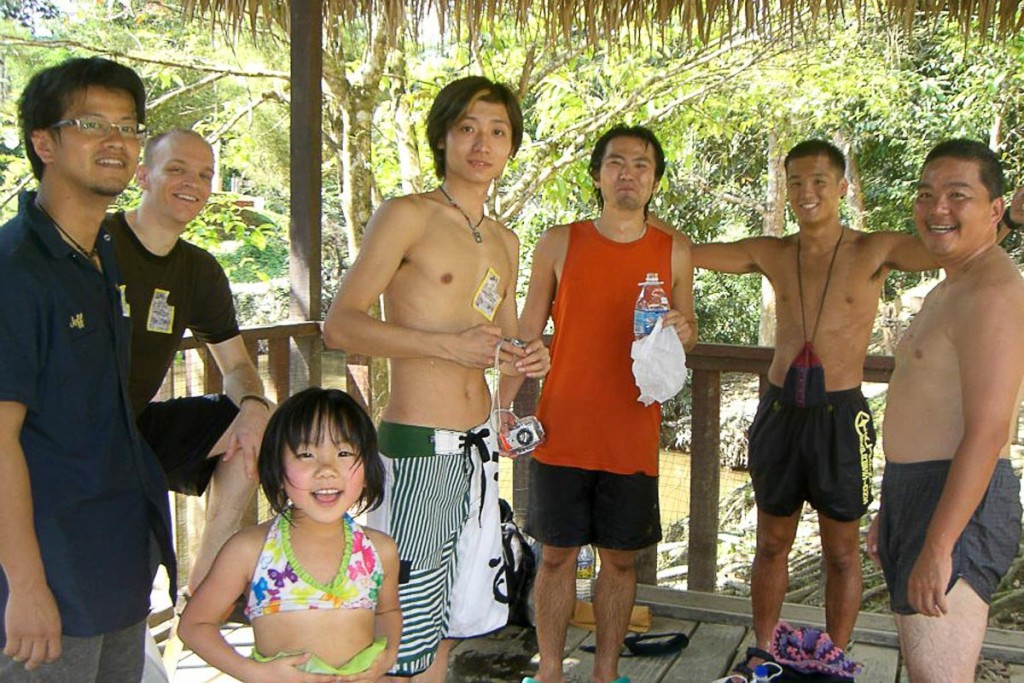
The ethnic groups in Malaysia
Malaysia is made up, broadly, of three ethnic groups: Malays, Chinese, and Indians. All of these are readily noticeable in my new surroundings: restaurants, people, signs, and shops representing each group are jumbled together along the busy, dusty shopping streets.
But there are others, too, and I’ve become especially enamored of a small Burmese restaurant on the edge of Chinatown. I go there for lunch with one or more of my new friends. The restaurant is run by real Burmese people, including cooks, and being inside is like being in a little secret world unknown to the people walking by outside.
Customers sit at long communal tables, side by side with strangers. (Many seem to know the staff well.) The walls are covered from the ceiling to halfway down with gigantic, yellowing photo-wallpaper showing the unbelievable structure of Bagan. The intended effect is to make you feel as if you are actually in Myanmar/Burma. It works.
I usually order a spicy rice dish with vegetables with tea. One of the waitresses, if she’s working, recognizes me and we chat in her very basic English about Burma. Learning and making contacts; who could ask for more?
The Burmese meals are heavy in rice, and I’m eating a lot of fresh fruit and Indian snacks from street vendors as well. My blood sugar is often too high, but I’m doing a lot of strenuous walking around in the hot sun so it evens out a lot too.
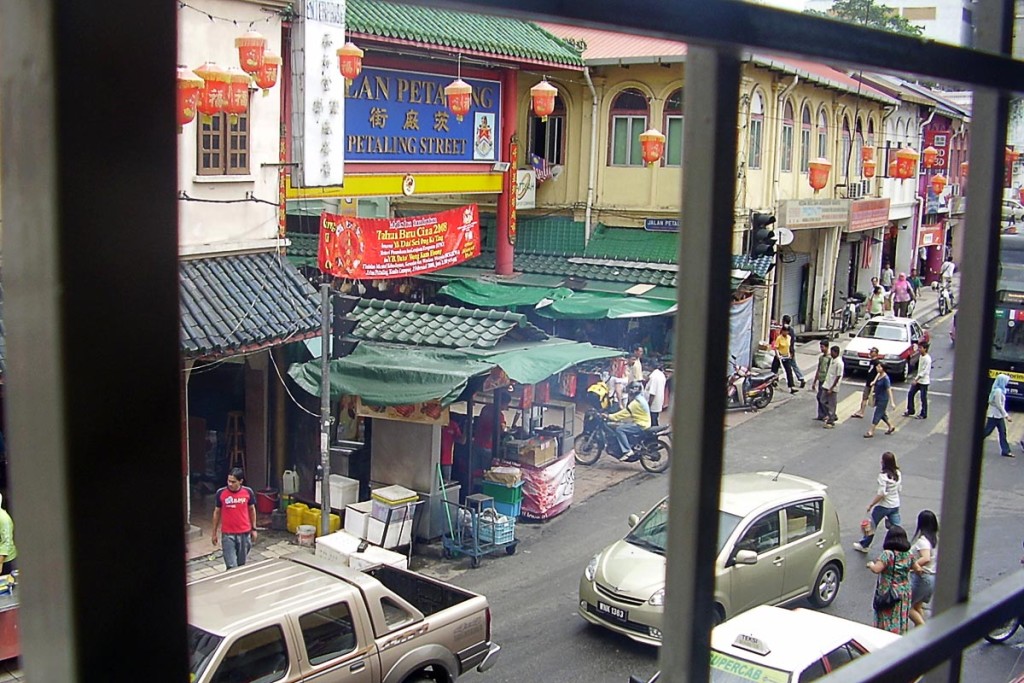
I feel like I have barely enough time to take in all the dense colors, smells, and noises that pulsate in the streets and pedestrian shopping arcades and floated incessantly through the air. Talk about a transition!
The multiculturalism that connects various fibers and weaves them together to produce something new is all-encompassing in Kuala Lumpur; as a magnet for various people from surrounding areas, the city is pulled this way and that by each group of immigrants. What makes it heartening is not only the experiences offered by this situation but by the live-and-let-live approach to daily life that becomes necessary.
Everybody’s got their place in Kuala Lumpur, and you yourself are free to walk back and forth between them, checking out the way people eat, talk, shop, and laugh with each other. The creativity and determination of people is easy to see everywhere; you can’t help but learn something about humanity in general at every turn.
![Chinatown at night. It always has the feel of a party, I guess because people are out looking for dinner or drinking every night. [Video still]](https://www.t1dwanderer.com//wp-content/uploads/2015/10/kuala-lumpur-chinatown-nighttime-scene.jpg)
Chinatown at night. It always has the feel of a party. [Video still]
What is an especially multicultural place you’ve visited? How were the people there?
Thanks for reading. Suggested:
- Share:
- Read next: Day 10: The tourist scam that actually worked
- News: Newsletter (posted for free on Patreon every week)
- Support: Patreon (watch extended, ad-free videos and get other perks)
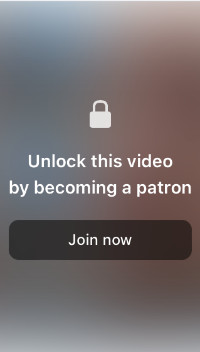
Support independent travel content
You can support my work via Patreon. Get early links to new videos, shout-outs in my videos, and other perks for as little as $1/month.
Your support helps me make more videos and bring you travels from interesting and lesser-known places. Join us! See details, perks, and support tiers at patreon.com/t1dwanderer. Thanks!
